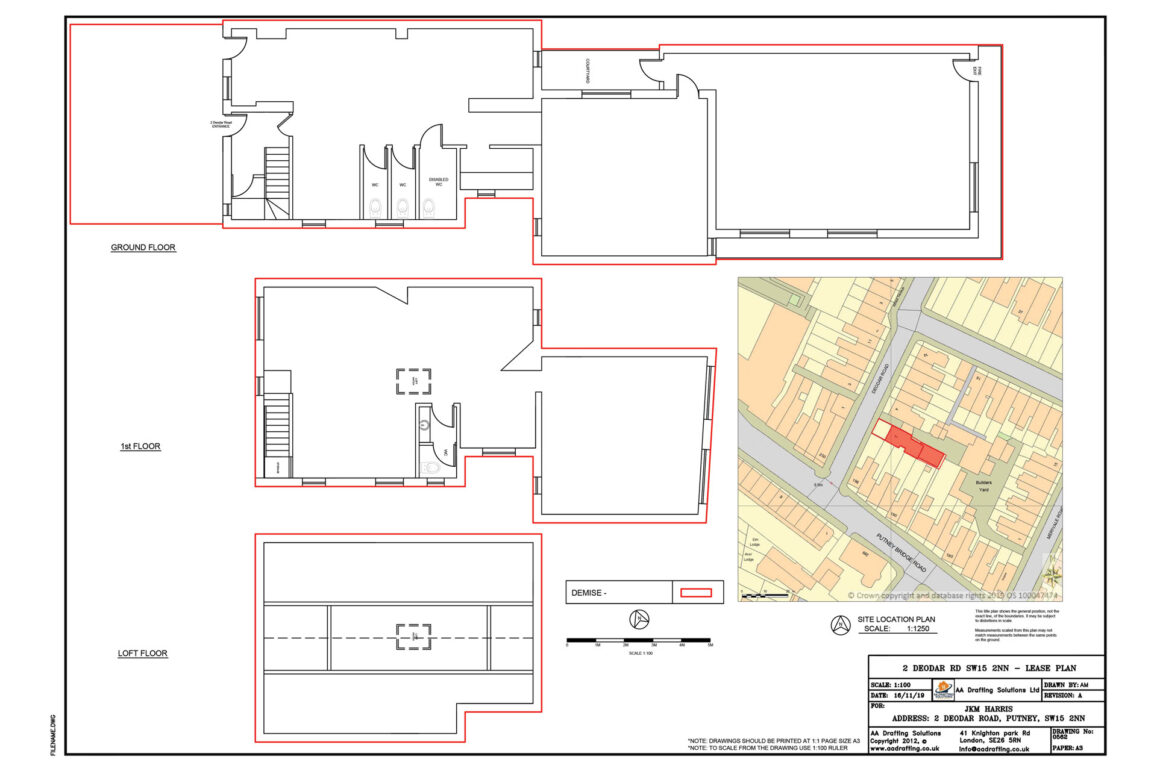Introduction
When it comes to real estate transactions, precision and compliance are non-negotiable. In the realm of property documentation, the significance of land registry lease plans cannot be overstated. These plans serve as vital components in legal processes, ensuring that property transactions proceed seamlessly. In this article, we delve into the intricacies of land registry lease plans, with a special focus on their role in the bustling real estate landscapes of London, Aylesbury, Watford, Harrow, and Luton.
Understanding Land Registry Lease Plans
At its core, a land registry lease plan is a detailed representation of a property’s dimensions and layout. Its primary purpose is to provide an accurate and up-to-date depiction of the property, aiding in legal processes such as conveyancing and property transactions. These plans must comply with strict legal requirements to be considered valid and enforceable.
Components of a Lease Floor Plan
A comprehensive lease floor plan comprises various components, including boundary measurements, internal and external features, and any shared spaces. Each of these elements plays a crucial role in ensuring the plan’s accuracy and compliance with land registry standards. From room dimensions to the location of specific features, every detail matters.
Significance of Land Registry Compliant Plans
The consequences of non-compliance with land registry standards can be severe. Inaccurate or incomplete lease plans can lead to delays in property transactions and, in some cases, legal disputes. It is essential for property owners and professionals involved in real estate to prioritize the creation of land registry compliant plans to avoid such complications.
Lease Floor Plans in London
The dynamic property market in London demands meticulous attention to detail in lease floor plans. Accurate plans facilitate smooth transactions in a market where precision is paramount. Whether it’s a residential property in Chelsea or a commercial space in the City, having a land registry compliant lease plan is essential for navigating the complexities of the London real estate landscape.
Lease Floor Plans in Aylesbury, Watford, Harrow, and Luton
While London takes the spotlight, regional variations in lease floor plan requirements cannot be ignored. Aylesbury, Watford, Harrow, and Luton have unique considerations and regulations governing property transactions. Understanding and adhering to local standards is crucial for property owners and professionals operating in these areas.
Benefits of Professional Lease Floor Plan Services
Achieving accuracy in lease floor plans requires expertise. Professional surveyors specializing in land registry compliant plans bring a level of precision that is hard to match. From conducting precise measurements to ensuring compliance with legal standards, their services offer peace of mind to property owners and those involved in real estate transactions.
The Process of Creating a Land Registry Compliant Lease Plan
Creating a land registry compliant lease plan involves a systematic process. From initial property inspection to the final drafting of the plan, every step must be executed with precision. Challenges may arise, but understanding the process and seeking professional guidance can help navigate potential pitfalls.
Choosing the Right Professionals
Selecting the right professionals for creating land registry compliant lease plans is a critical decision. Experience, reputation, and a track record of delivering accurate plans are key factors to consider. Property owners should conduct thorough research before entrusting this important task to a surveyor or service provider.
Frequently Asked Questions (FAQs) About Land Registry Lease Plans
-
What is the purpose of a land registry lease plan?
-
-
A land registry lease plan serves as a detailed representation of a property’s dimensions and layout, crucial for legal processes and property transactions.
-
-
What are the consequences of non-compliance with land registry standards?
-
-
Non-compliance can lead to delays in transactions and legal disputes, emphasizing the importance of accurate and compliant lease plans.
-
-
How do regional variations impact lease floor plan requirements?
-
-
Different areas may have unique considerations and regulations, requiring property owners to adhere to local standards.
-
-
Why is it essential to hire professionals for lease floor plans?
-
-
Professionals bring expertise and precision to the process, ensuring accurate and compliant lease plans that stand up to legal scrutiny.
-
-
What should property owners look for when choosing a surveyor or service provider?
-
-
Factors such as experience, reputation, and a proven track record in delivering accurate plans should be considered.
-
Case Studies
Real-life examples highlight the tangible impact of accurate lease plans on property transactions. These case studies serve as valuable insights into the challenges faced and the successful outcomes achieved through meticulous planning and adherence to land registry standards.
Future Trends in Lease Floor Plans
As technology continues to advance, the creation and use of lease floor plans are also evolving. Digital tools, augmented reality, and artificial intelligence are shaping the future of property documentation. Keeping an eye on these trends is essential for staying ahead in the real estate game.
Conclusion
In conclusion, the importance of land registry compliant lease plans cannot be overstated in the realm of real estate. Whether navigating the bustling market of London or considering property transactions in regional areas like Aylesbury, Watford, Harrow, and Luton, precision and compliance are paramount. By prioritizing accurate lease plans and seeking professional assistance, property owners and professionals can ensure seamless transactions and mitigate legal risks.
Read more: Fire Safety Floor Plans



